2020 Division III Softball Season Mark Allister Preview
2020 Division III Softball Season Mark Allister Preview
Mark Allister delivers the most in-depth 2020 Division III softball season preview. Here's what you need to know.
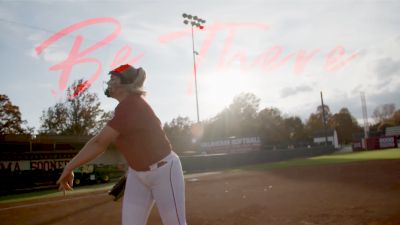
Unlock this article, live events, and more with a subscription!
Already a subscriber? Log In
Mark Allister is the author of Women’s College Softball on the Rise: A Season Inside the Game. He will be writing on DIII softball this spring, and would welcome story ideas and comments at allister@stolaf.edu
In some years a champion emerges because one pitcher rolls through the tournament, carrying her team to an unimagined height. If that pitcher graduate, gets injured, or simply doesn’t have the same kind of success come tourney time, the results won’t get replicated.
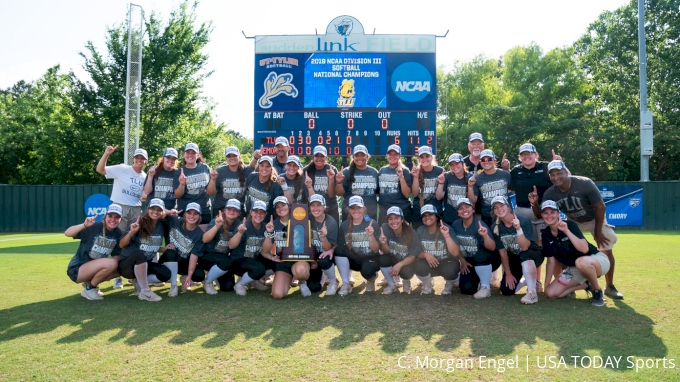
Texas Lutheran University (TLU) won the 2019 DIII National Championship with great balance, and with that balance and only one senior as a regular contributor, their 2020 line-up looks stacked and fully capable of repeating.
TLU produced runs last year primarily with speed rather than power. They finished second in DIII in on-base percentage; their team speed was devastating, as the Bulldogs led the division in stolen bases. Outfielder Kelly Jurden batted .458 and was successful stealing in 61 of 63 attempts; shortstop Cassie Roche hit .324 and was 31-for-31 in steals.

The pitching, in general, was excellent, posting a 1.67 team ERA led by Kayla Oliveira. But head coach Wade Wilson didn’t know on any particular weekend who was going to be his go-to pitcher. Oliveira was first-team All-Conference, but Jordaine Bishop returned from injury late in the year to throw some crucial innings — she was the Super Regional Most Outstanding Pitcher.
Chassety Raines, who started in center field and hit .372, began pitching mid-year and became the ace by season’s end. Raines went 10-0 in 2019, had an ERA of 1.03, and was named the NCAA DIII Championship Most Outstanding Player.
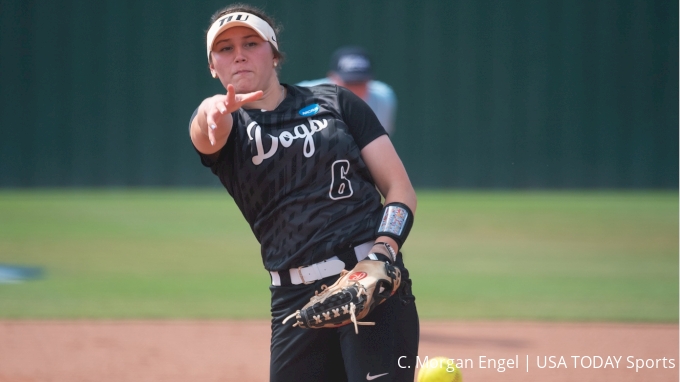
Those three returners in the circle for TLU, and will be joined by a junior college transfer and four freshmen. The pitching staff is deep and talented.
“Last year’s championship gives us more confidence,” Wade says. “The players know what it takes to get to the World Series, and we have a lot of talented kids and we need to keep everyone going the same direction. And if we do that, I think we have a chance to repeat.”
West Region
In recent years the West region, which includes teams from Texas and the West Coast, has been absolutely loaded with quality teams.
In 2018 TLU was 39-1 and ranked No. 2 in the country before losing two games in the opening round of the tournament to perennial power and 2016 national champion University of Texas Tyler.
In 2019 East Texas Baptist University was ranked No. 2 in the country and was the high seed in the Texas regional, with Birmingham-Southern at No. 6 right behind and TLU ranked No. 8. UT Tyler, who has moved up to DII, was ineligible for post-season, and with their nemesis gone TLU came through the Regional as the underdog. The Bulldogs went on to beat No. 5 ranked Linfield College from Oregon in the Super Regionals and then swept all five games in the championship tourney.

Linfield is a perennial power who has had both great success and frustration. Led by head coach Jackson Vaughan, Linfield from 2006-2015 went to six DIII World Series, winning in 2007 and 2011 and finishing runner-up in 2010 and 2012. But lately, they’ve had difficulty getting out of the West region, losing the past two years in the super-regionals to Texas teams.
Linfield graduated two big bats in Darian Stedman and Paige Smotherman; an even bigger loss is pitching ace Shelby Saylors, a four-time All-Conference player and Co-Pitcher of the Year in 2019.
Despite the graduations, Linfield in 2020 will likely contend in the Northwest Conference, though Whitworth, led by Co-Pitcher of the year & Freshman of the Year Drea Schwaier-Wolf, looks to be the conference preseason pick. The big news at Whitworth is the departure of Cristal Brown, who accepted the head coaching position at DI Idaho State. Former assistant Bob Castle takes over as interim head coach.
East Texas Baptist University, who won it all in 2010 and also finished fifth in the 2014 World Series, is one of those other perennial national powers who has been unable recently to get out of the West region and into the championship tourney. But unlike Linfield, ETBU looks like they could be even better in 2020. Though they graduated All-Conference third baseman MacKenzie Anderson, they return all their other starters, including two excellent pitchers in Beatriz Lara and Preslye Cox.
ETBU's talent runs deep. Some returning starters from last year’s powerhouse team may be competing for their starting positions. Head Coach Janae Shirley knows she has a talented squad, but she nevertheless cautions against assuming that everything will work out. “We have a lot of new kids, both freshmen, and transfers,” Shirley says, “so it will be interesting to see how the pieces of the puzzle fall together.”
Atlantic Region
A second powerhouse region in recent years has been the Atlantic, who in 2019 sent numerous teams to the tournament with five teams ranked in the top 18. The Atlantic region spans a geographic area from Virginia to Alabama and therefore can have strong teams bus to non-Atlantic regional sites. Atlantic members Randolph-Macon and Christopher Newport won regional tournaments hosted by East region schools Kean and The College of New Jersey (TCNJ), and Lynchburg scored the biggest upset in the tourney in the regional round, taking down the two-time defending champs, Virginia Wesleyan University, who were even playing at home.
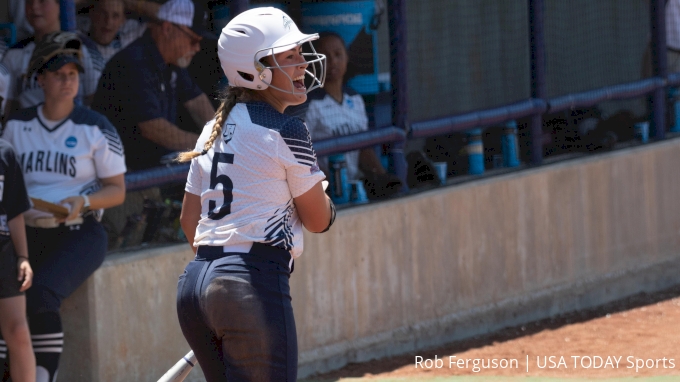
VWU returns six first-team All-Conference performers from the powerful Old Dominion Athletic Conference, led by 2018 ODAC Player of the Year, outfielder Madison Glaubke, and one of the best DIII pitchers in the last decade, Hanna Hull. The two-time NFCA Division III Player of the Year, Hull in 2019 had to settle for being only a first-team All-American. That VWU could not make it out of their regional, despite having returned most of their stars from the champion squads, demonstrates how nothing is guaranteed. But VWU will be a national contender once again in 2020.
East Region
Teams from the New Jersey Athletic Conference (NJAC) typically dominate the rankings in the East region, and in 2020 strong programs at Kean, Ramapo, and Rowan look to continue that success, though each team graduated key players.
NJAC member TCNJ, formerly called Trenton State, is the greatest dynasty in DIII softball history; over the span of 15 years from 1982-1996, they won six titles, finished runner-up another six times, and lost in the semi-finals the other three. The current team hopes to return TCNJ to national success. Though they graduated second-team All-American catcher Jess McGuire, they return All-American third baseman Lauren Conroy, who swings a big bat. Perhaps even more important in regards to their prospects, TCNJ returns its top pitchers, including two-time NJAC Pitcher of the Year Alanna Namit.
New England softball has traditionally been strong at the DIII level, given in particular the large numbers of highly regarded academic schools in attractive settings. MIT and Tufts University are often national contenders, and Tufts returns a dynamic pitching duo of Kristi Van Meter and Kristina Haghdan.
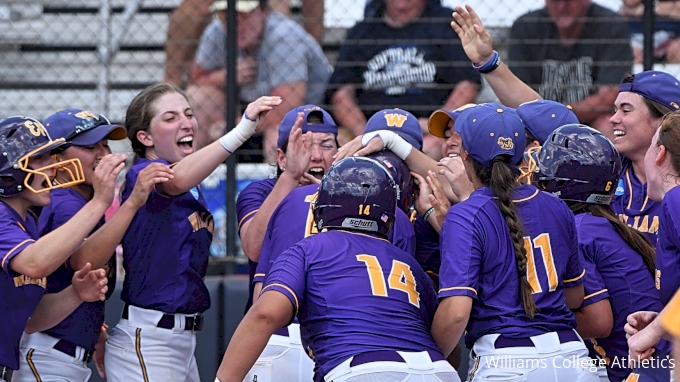
In two of the past three years, Massachusetts’ Williams College has made the final eight. Head Coach Kris Herman will be inducted into the National Fastpitch Coaches Association Hall of Fame in December 2020, an honor acknowledging her achievements as head coach both at Tufts, her alma mater, and for the past sixteen years at Williams. Though Williams loses a number of key seniors, they do return a strong pitching staff, led by Rebecca Duncan and Kirstin Mapes.
Perhaps the strongest returning team on paper in New England is the surprise World Series contestant from last year, Eastern Connecticut State University. ECSU Head Coach Diana Pepin believed her 2019 team would be a year away. “I thought that 2020 would be our year to contend nationally. But the team gelled at the right time.” They surprised her when they blew through their conference tourney, outscoring their opponents 20-0. Their run continued with five straight victories to sweep their regional and super-regional. ECSU then upset the #1 national seed St. Thomas University with a 2-1 victory in the World Series’ opening round, before eventually falling 7-6 to Texas Lutheran and then 3-2 to Emory in the national semifinals, ending their terrific season.
ECSU returns five first-team All-Conference performers from the Little East Conference, including Pitcher of the Year Morgan Bolduk, who was an NFCA third-team All-American performer. ECSU, however, will have to wait part of their season for her. Bolduk will eventually serve in the Army, and she’s currently in Advanced Individual Training, preparing to be a medic.
Though teams from the two coasts and Texas have been national champions over the past decade, midwestern schools Simpson College, St. Thomas University, and Central College all won multiple championships in the two prior decades. And the Midwest region looks strong once again in 2020, though some of the traditionally powerful programs lost key players.
Under Head Coach Renae Hartl, Luther College has been in the national championship series five of the past nine years, but they will have to replace the best pitcher-catcher combo, Samantha Bratland and Addy Pender, in the American Rivers Conference. Coe College also graduated three stars: Haley Jones, Alyssa Olson, and Allie O’Brien.
Defending conference champion Central College graduated the Co-Pitcher of the Year in Mariah Fritz, but they return three All-Conference players in Daria Parchert, Shaye Witte, and Sara Tallman. Head Coach George Wares believes that he has brought in one of Central’s best freshman classes in recent years, including three pitchers. “How quickly the young players come along,” Wares says, “will be a big key. Our schedule is very challenging, including games in the Lead-Off Classic in March.”
The University of Dubuque was the surprise team in the American Rivers Conference in 2019, and they return first-team All-Conference outfielder Kaylin Featheringill and second-team All-Conference pitcher Abby McBee. Dubuque’s program is trending upward, led by Head Coach Jeff Lamb, who in his first year saw the Spartans set a school-record win total with twenty-six. Dubuque is looking in 2020 to take the next step and join the other national powers in the conference.
Any preview of the Minnesota Intercollegiate Athletic Conference (MIAC) begins with John Tschida’s program at the University of St. Thomas. His teams have won sixteen of the past nineteen MIAC regular-season titles, and have won 35 or more games in each of the last sixteen seasons. St. Thomas graduated three first-team All-Conference players from last year’s team that entered the DIII World Series as the #1 seed, but don’t expect a large drop-off as the Tommies return seniors Elise Barnes and Kierstin Anderson-Glass, who were named MIAC Player and Pitcher of the Year, respectively.
If St. Thomas falters, the MIAC has three teams often bunched in recent years right behind them. St. Catherine University has seen its fortunes rise under head coach Colleen Powers, qualifying for the NCAA tournament in 2016 and 2017 and getting to the championship round in that final year. They graduated two impact players but have a strong group back, including pitchers Kathryn Propper and Annabelle Schutte. St. Benedict College, a post-season team in both 2018 and 2019, looks to continue that success under head coach Rachael Click, returning speed and pitching, led by two All-Conference pitchers in Ally Hjorth and Grace Gilmore.
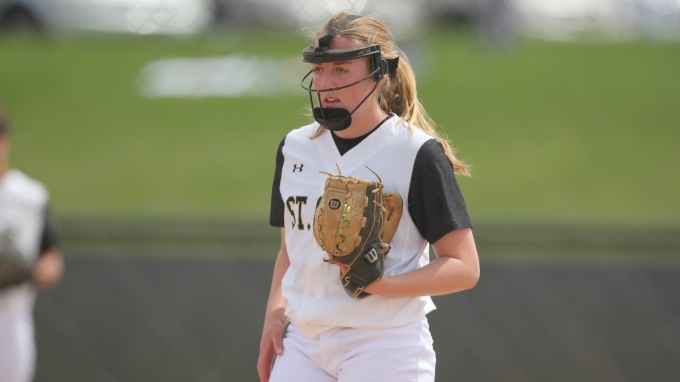
St. Olaf College senior Julie Graf has been a dominant pitcher in her career — Graf is the career strikeout leader in MIAC history with a full year to add to her total. The Oles have never made an NCAA appearance, but their young head coach Kayla Hatting has consistently improved the roster in her three years leading the program. St. Olaf qualified for the conference tournament the past two years, and in 2019 they lost a heartbreaking 1-0 decision to St. Thomas in the tourney, a game that might have cost them that first NCAA bid. Though the Oles graduated a key player in three-time first-team All-MIAC catcher Emily Carr, a veteran squad and Graf may be enough to get them to the postseason.
A season preview can’t cover all the teams, conferences, or even regions equally; this preview has focused on regions that have usually spun out the eventual champion. But no one would be surprised to see the Central region’s Trine University, for example, return to the final eight and contend. They have to replace the big bat of Lainey McCue and the innings in the circle of Kate Saupe but their roster is deep. And perhaps they will unveil a new trick play — one of the highlights of last year’s tourney run for Trine was their final out in the super-regionals, a play that went viral on the internet.
One final team to mention is Illinois Wesleyan University, Great Lakes region member who has been in the DIII championship playoffs three years in a row, including reaching the final game in 2018 before losing to Virginia Wesleyan. Head Coach Tiffany Prager has a special group of seniors at IWU, led by their do-everything, All-American shortstop Sam Berghoff and the reigning NFCA DIII National Pitcher of the Year, Ally Wiegand. If there is a team of destiny, Illinois Wesleyan might be the one in 2020.
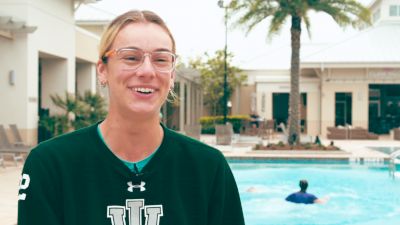
It takes luck, excellent team chemistry, good health, and individual player improvement for any program to make the championship tourney, much less be crowned the victor. And in February, such elements are still unknown. Sometimes unranked teams catch fire late in the year, play their best in the post-season, and surprise everyone by making it to the final eight.
In DI softball, regional hosts almost always win their regions (32 of 32 over the past two years), but this is not true for DIII, as only four of sixteen regional winners hosted in 2019. Home field advantage doesn’t appear to be as important in DIII.
The DIII softball season begins later than the other divisions, with many teams not opening until late February or even March. If you’re looking to get an early read on the 2020 national championship tourney, pay attention March 6-8 to the NFCA DIII Leadoff Classic in Tucson, Arizona, which is played every other year. Twenty-four highly regarded teams will each play six games in a round-robin format, and a “winner” will be declared based on records. The last two Classics, in 2016 and 2018, were won by the eventual national champions.
The first night features, among other big games, Texas Lutheran playing Illinois Wesleyan; in the second night, East Texas Baptist squares off against Emory. Should be fun.
Allister’s Final Four Picks for the 2020 National Championship
- Texas Lutheran
- Illinois Wesleyan
- Eastern Connecticut State University
- Virginia Wesleyan.